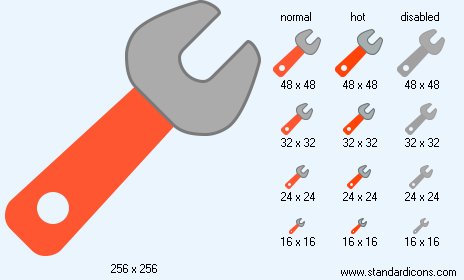


|
| ||||||||
|
|
Options Icon |
|
Icon sizes: 256x256, 64x64, 48x48, 32x32, 24x24, 16x16, 512x512
File formats: ICO, GIF, PNG, BMP
Designing Standard Tab and Menu Icons for Android Apps
When designing Android apps or designing graphics for mobile apps, one must conform to srict guidelines. Re-using images made for other operating systems, especially desktop-based, is not a good idea. Foreign graphics will look out of place at best, or will make your Android apps hardly recognizable at worst.Making Tab and Menu Icons for Android Apps Description: When designing mobile apps or designing graphics for Android apps, one must follow certain guidelines. Using icons made for different systems, especially desktop-based, is generally not a good idea. Foreign icons will look weird at best, or will make your Android apps appear hardly recognizable at worst. Body: There are precise guidelines published for designing standard-compliant Android icons. Different design guidelines are published for tab icons and menu images.
Tab icons are drawn in individual tabs in tabbed UI. Tab icons must be supplied in two distinct states: selected and unselected. It is recommended that tab icons are created as simple, flat shapes as opposed to icons drawn in 3D or isometric projection.
Android OS and Android apps can run on a wide range of hardware platforms using a wide range of hardware. In connection to icon images, those devices can have different screen sizes, screen resolutions, pixel dimensions and density. To accommodate the variety of screens, Android developers should provide all tab icons used in their apps in at least three resolutions to be displayed on low, medium, and high density displays. Resolution-wise, the outer boundaries for the three resolutions are defined as 24x24, 32x32, and 48x48 pixels. The size of the shape itself should not exceed 22x22, 28x28, and 42x42 pixels respectively. By providing all three standard sizes, designers can ensure that their apps will be shown properly on a wide range of platforms running the Android OS.
Menu icons are displayed in the "options" menu, and are displayed to users when they press the Menu button. Similar to tab icons, menu icons are specified as flat, grayscale images. Just as tab icons, developers should not use 3D or isometric projections.
Pixel resolutions for menu icons are described in a slightly more comprehensive way compared to tab icons. Instead of two resolutions described for tab icons (inner shape and boundary box), the inner shape of menu icons can be smaller or bigger depending on their shape. If a menu icon is square-shaped, its size should be smaller than for icons with different shapes. The reason for specifying two different size limits is to establish a consistent visual size across the two icon types.
The outer dimensions for ldpi, mdpi and hdpi icons are described as 36x36, 48x48, and 72x72 pixels respectively. Inner shapes for square, low-definition icons is 22x22 pixels, while non-square icons should fit into a boundary box sized 24x24 pixels. Similarly, mdpi icons should fit 30x30 and 32x32 pixel boxes, while high-definition images should fit into 44x44 and 48x48 pixel rectangles respectively.
Instead of designing your own icons matching these guidelines, Android developers have an option of obtaining stock graphics from professional designers. For example, Android Tab Icons by Aha-Soft offer 112 unique tab graphics in selected and unselected states and all three standard resolutions. Should additional resolutions be required, developers can render graphics at any size by accessing scalable vector sources. Android Tab Icons can be previewed and downloaded at http://www.aha-soft.com/stock-icons/android-tab-icons.htm.
Copyright © 2009-2022 Aha-Soft. All rights reserved.
|
